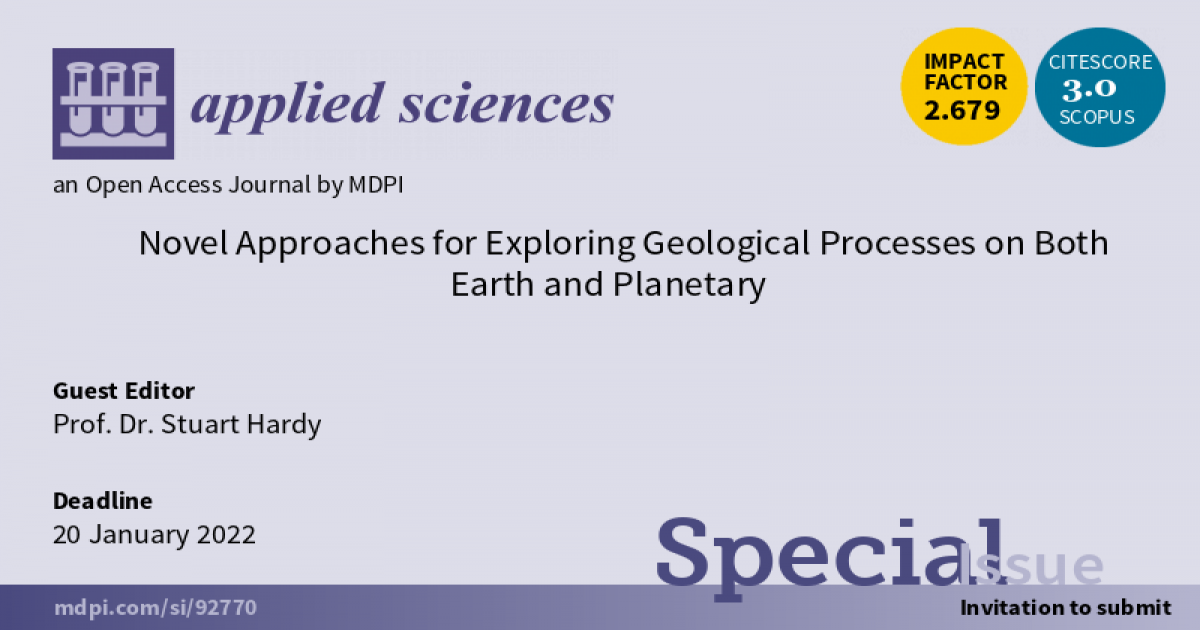Novel Approaches for Exploring Geological Processes on Both Earth and Planetary
A special issue of Applied Sciences (ISSN 2076-3417). This special issue belongs to the section "Earth Sciences".
Deadline for manuscript submissions: closed (30 September 2022) | Viewed by 2068

Special Issue Editor
Interests: mathematical modelling; structure; folding; faulting; sedimentation; volcanism
Special Issues, Collections and Topics in MDPI journals
Special Issue Information
Dear Colleagues,
Geomorphic/geological processes on the Earth and planetary surfaces and their shallow subsurface include the scientific key codes to understand the past evolutions and the future destinies of our world. To this end, I use a variety of different approaches to try to better understand (through both modelling and validation) the various relationships preserved in the physical geological record on Earth, or recorded by remote sensing techniques on distant Planetary bodies. I am interested in both continuum (e.g., finite difference, finite element) and discontinuum techniques (e.g., discrete element, SPH) both from a theoretical standpoint and practical applications.
Therefore, this Special Issue aims to provide reviews for innovative tools and technologies for exploring geomorphic/geological processes on the Earth and planetary surface (and even the shallow sub-surface). Research papers or case studies involving any discipline of geomorphic/geological processes are welcome.
Prof. Dr. Stuart Hardy
Guest Editor
Manuscript Submission Information
Manuscripts should be submitted online at www.mdpi.com by registering and logging in to this website. Once you are registered, click here to go to the submission form. Manuscripts can be submitted until the deadline. All submissions that pass pre-check are peer-reviewed. Accepted papers will be published continuously in the journal (as soon as accepted) and will be listed together on the special issue website. Research articles, review articles as well as short communications are invited. For planned papers, a title and short abstract (about 100 words) can be sent to the Editorial Office for announcement on this website.
Submitted manuscripts should not have been published previously, nor be under consideration for publication elsewhere (except conference proceedings papers). All manuscripts are thoroughly refereed through a single-blind peer-review process. A guide for authors and other relevant information for submission of manuscripts is available on the Instructions for Authors page. Applied Sciences is an international peer-reviewed open access semimonthly journal published by MDPI.
Please visit the Instructions for Authors page before submitting a manuscript. The Article Processing Charge (APC) for publication in this open access journal is 2400 CHF (Swiss Francs). Submitted papers should be well formatted and use good English. Authors may use MDPI's English editing service prior to publication or during author revisions.





